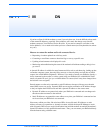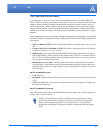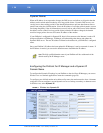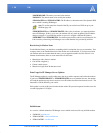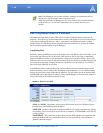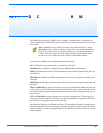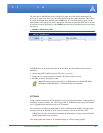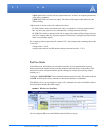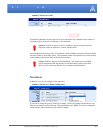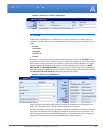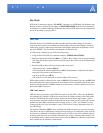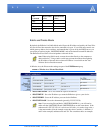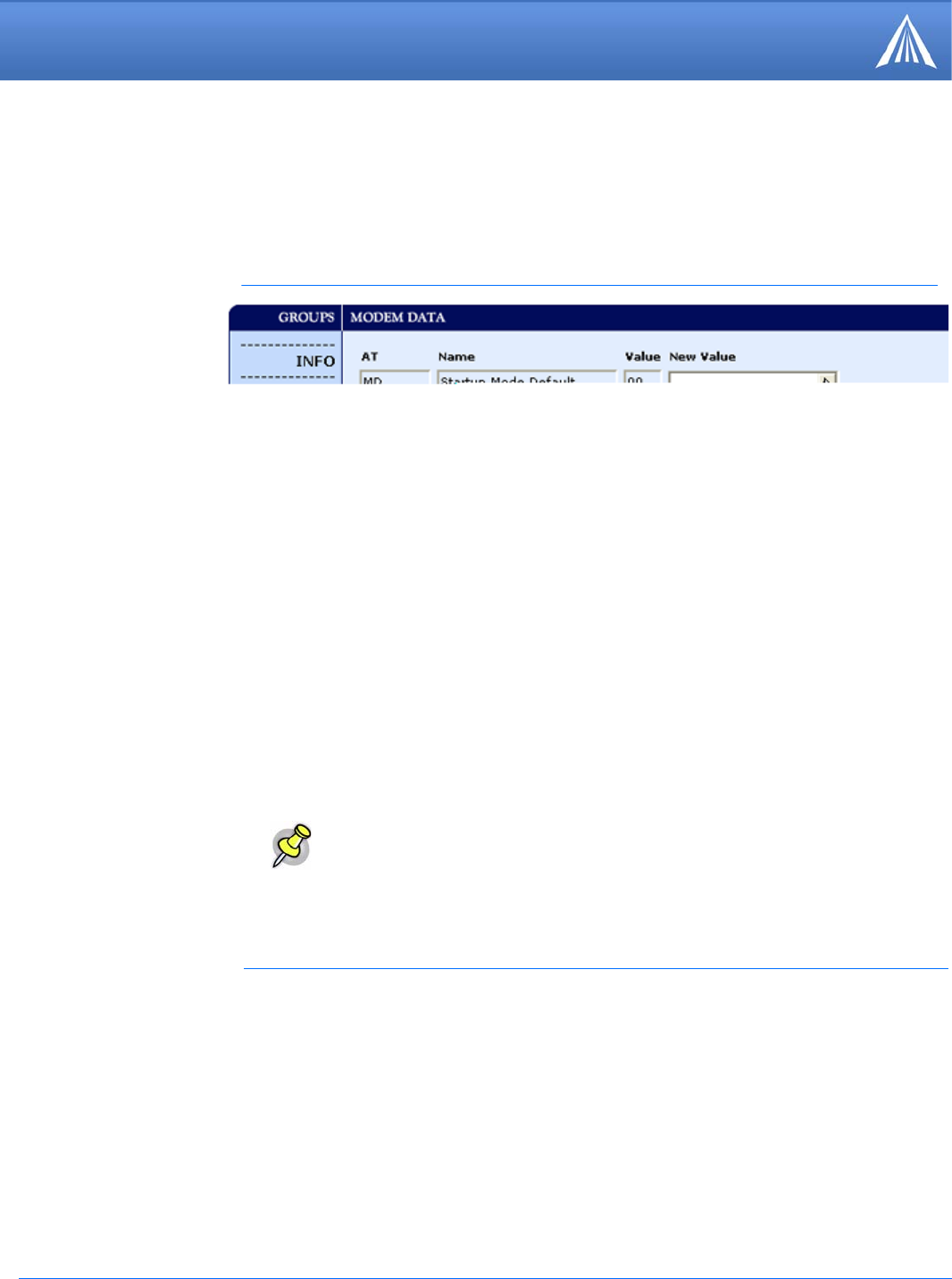
PinPoint EDGE/GPRS - User Guide, version 2.32 21
Data Communication and Host Modes
AT Mode
Using a terminal connection, AT commands are used to configure the modem, command it to do
something, or query a setting. For a full listing of the AT commands, refer to page
59. Wireless
Ace is a graphical user interface for most AT Commands.
AT commands must always be terminated by <CR> (ASCII character 0x0D), a carriage return
(pressing enter on the keyboard). Some may also include a new line or line feed <LF>.
If E=1 (Echo On), the AT command (including the terminating <carriage return) will be dis-
played (output) before any responses.
Two settings affect the format of AT command output: V (Verbose) and Q (Quiet).
The serial port of the PinPoint can be configured to enter any of the modes automatically on
power up (in most cases, this is also after it has registered on the cellular network). This is done
by setting the Startup Mode Default (refer to MD in the AT Command listing, page
87) to the
desired mode. If this setting is non-zero, the modem will enter the specified mode after 5 seconds.
If you want to cancel this behavior, the ATMD0 command can be used before the 5-second time-
out expires.
FIGURE 1. Wireless Ace: MD
If the PinPoint is in any mode other than AT or PassThru, the AT command mode can be re-
entered by:
• Deactivating DTR (if &D2 or Ignore DTR, S211, is not set).
• Issuing the +++ escape sequence (if Disable AT Escape, DAE, is not set).
• Resetting or Power cycling the modem.
Note: DTR needs to be asserted (S211=1 or &D0) by the host before PPP Mode,
SLIP Mode, UDP PAD Mode, or TCP PAD Mode can be entered.




